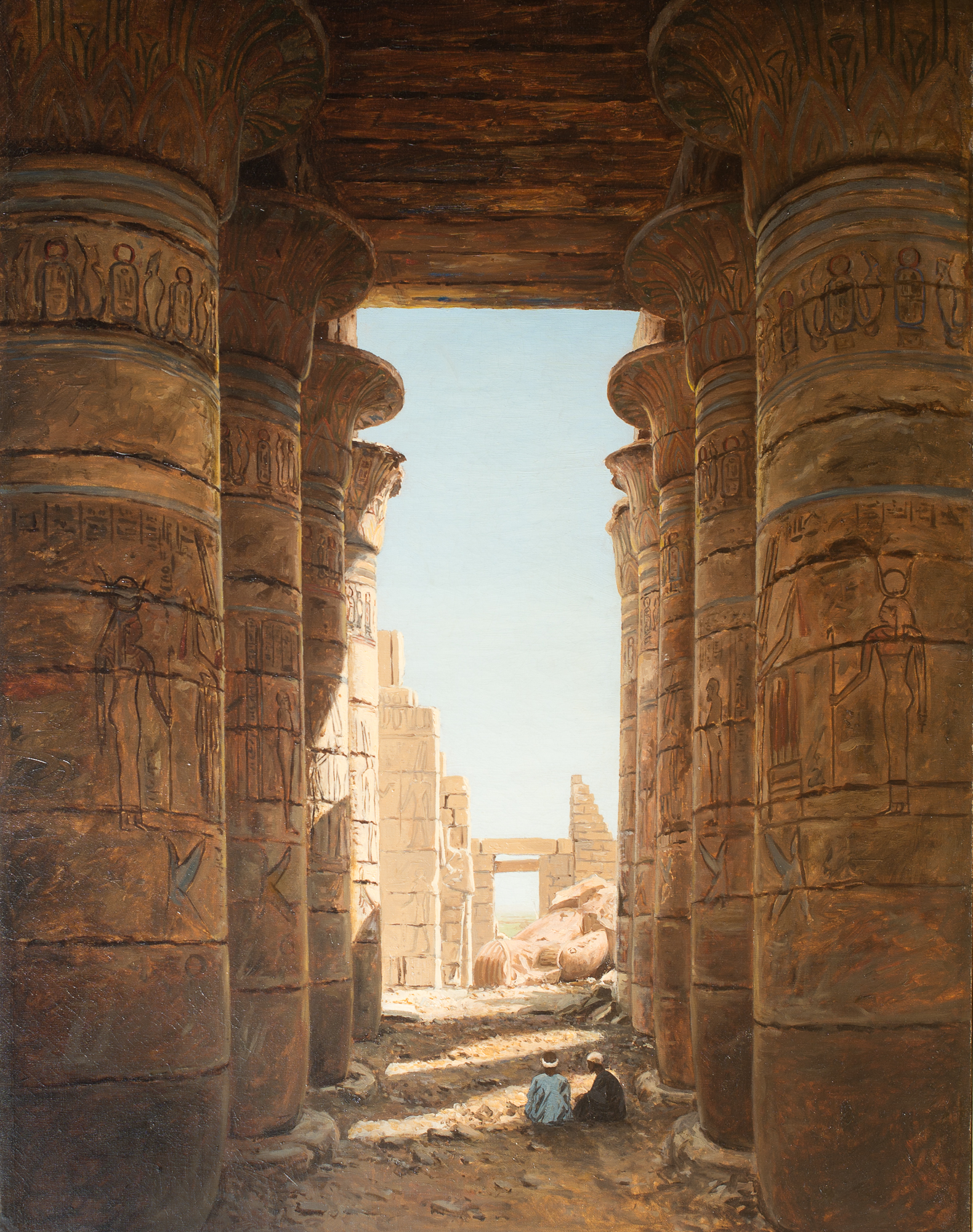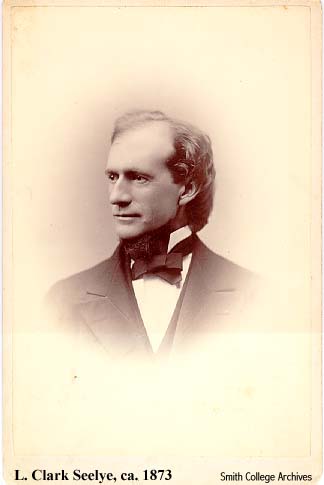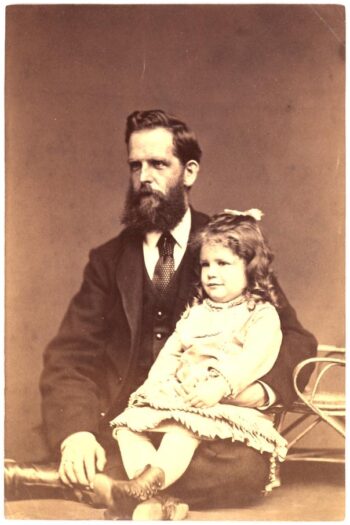
Lockwood De Forest (American, 1850-1932)
Ramesseum at Thebes, circa 1876
Oil on canvas
Purchased with the Hillyer-Mather-Tryon Fund
[on view; 3rd floor]
The debate over the 1940s sale of some 100 paintings from the Smith College Museum of Art collection—including a Lockwood de Forest work, Ramesseum at Thebes, which sold for $10—raises the question over whether selling off works of American art, at the time deemed unimportant, was prudent. Now that the painting is once again owned by Smith, it will be part of an installation in August.
In February 1876, Lockwood de Forest ventured into Thebes as part of his multi-month tour of Egypt. Ramesseum at Thebes portrays the famed, fallen Colossus of Ramesses II (known as “Ozymandias” after the 1817 Percy Shelley poem it inspired) memorializing Pharaoh Ramesses II. Highlighted by the Egyptian sun and framed by the roofed hypostyle hall, the columns of which are decorated with deteriorating illustrations of the Pharaoh’s military successes. Upon returning to the United States, de Forest created this painting in his studio, using oil sketches and drawings from his travels, and in this case, a tourist photograph called The Temple of Ramesses III, Medinet Habu, from the studio of French photographer Henri Béchard.

The Temple of Ramesses III, Medinet Habu, about 1872, Albumen silver print
39.5 × 28.6 cm (15 9/16 × 11 1/4 in.), 84.XP.767.19
The J. Paul Getty Museum, Los Angeles
De Forest’s canvas was one of three Orientalist paintings purchased by Smith College President L. Clark Seelye in July 1879. Before that, Ramesseum was likely a gift of the artists to a fellow artist, James Wells Champney (1843-1903), Smith College’s first professor of art from 1877-1884. All three were sold in 1940 to Harry Eichleay in Pittsburgh, PA, but Alice Pratt Brown Professor John Davis rediscovered Ramesseum at Thebes in the Debra Force Fine Art exhibition in 2015, allowing the Museum to recover one of its foundational collection. People might think that liquidating museum collections is going to be the immediate way of solving financial challenges, however, Davis’s research indicates that the sale of what today are widely considered to be masterpieces bought the college “some furniture and some paint on the walls.”
In fact, part of Smith College’s interest in the DeForest painting is that Seelye, with a personal interest in the Middle East, bought three works that would today be labeled “orientalist.” Thus the rediscovery of Ramesseum not only reconnects Champney’s network and influence at Smith, but the painting also speaks to the interest and experience of the 19th century American artists in North Africa, the Middle East, and India, picturing the “exotic.”
Ramesseum at Thebes is only one of about 100 paintings sold from Smith’s collection in the 1940s. Bringing it back to Northampton is an effort to represent the college’s original collection of American art. People can also have a slightly more precise and a wider sense of Seelye’s tastes and what the original Smith art museum collection would have looked like.
Now on view on the third floor of SCMA, Ramesseum at Thebes by American painter and designer Lockwood de Forest indeed has an intriguing story to tell.
What do you think about the story?
Read more about Ramesseum at Thebes here.


